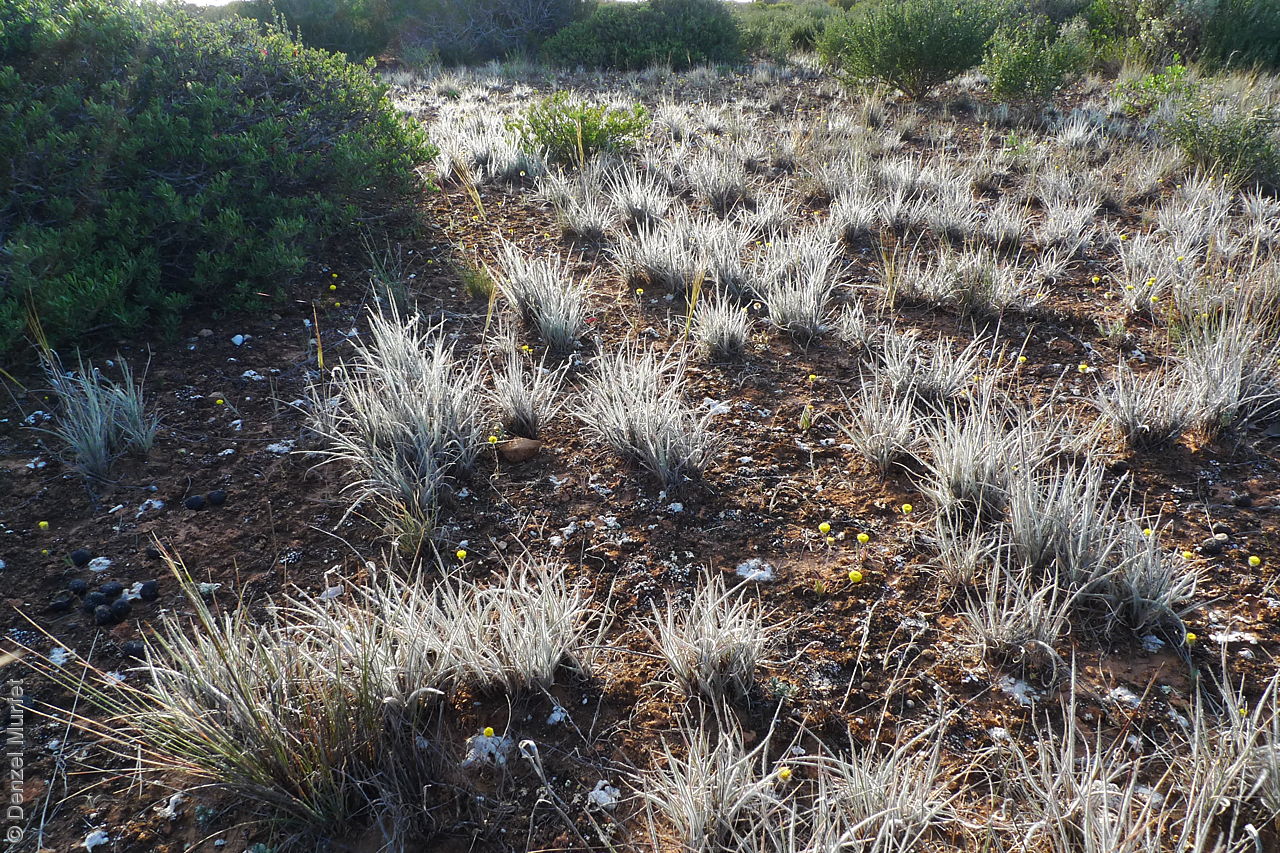
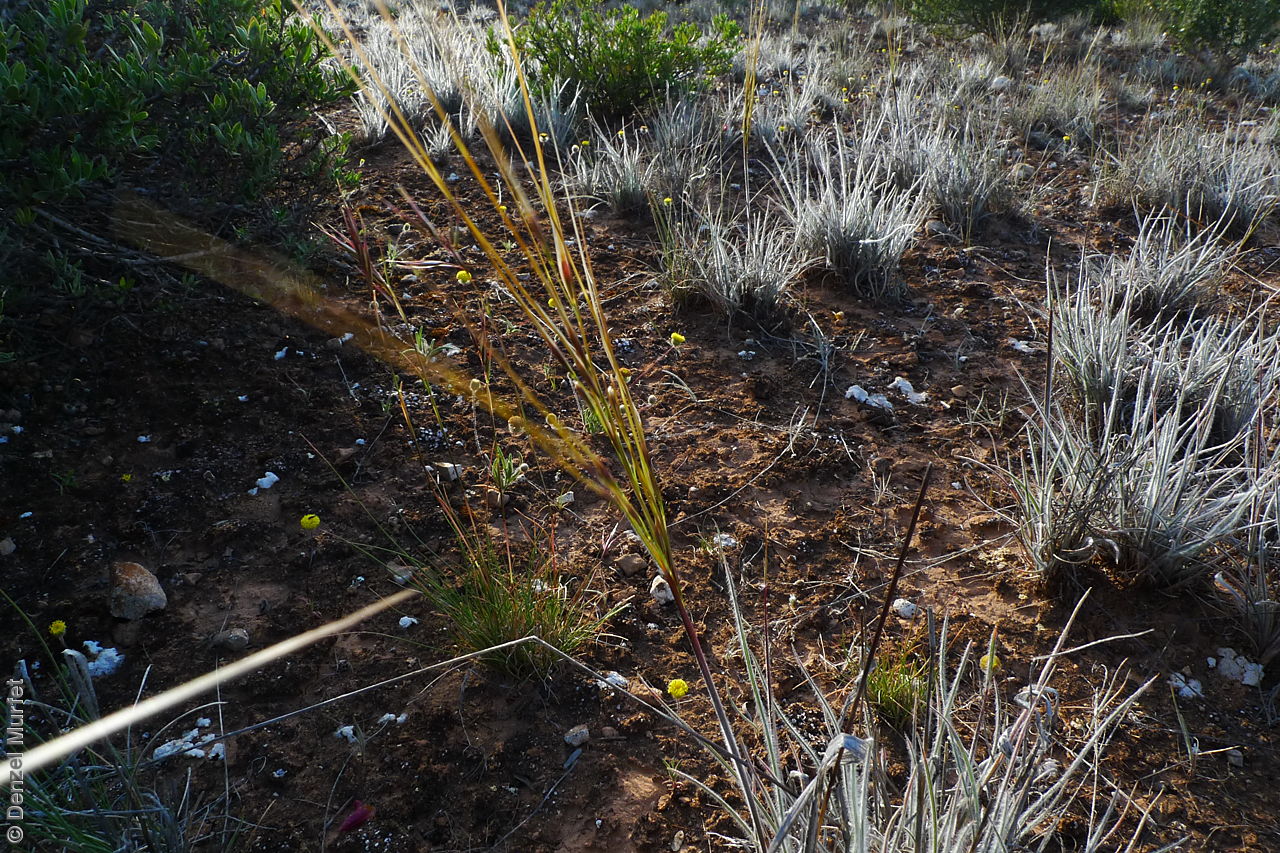
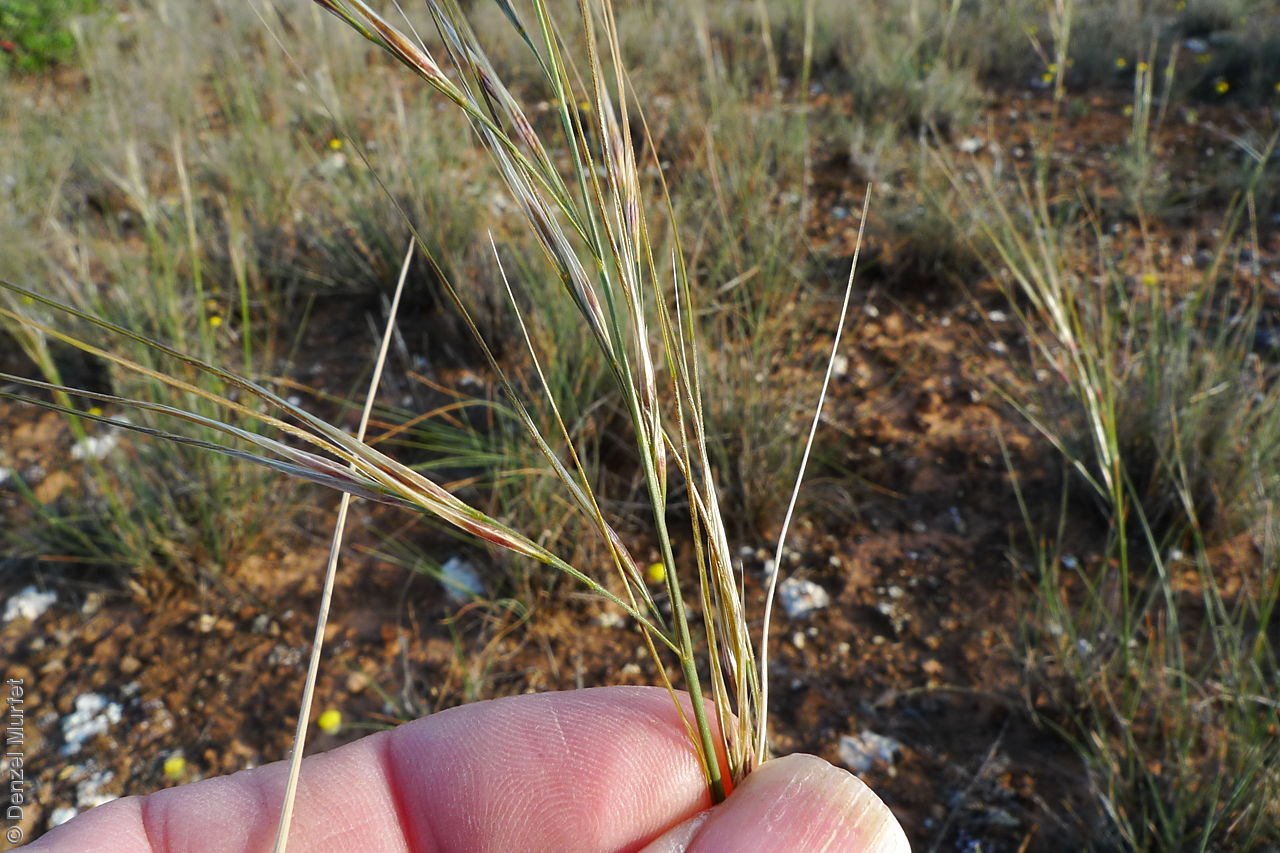
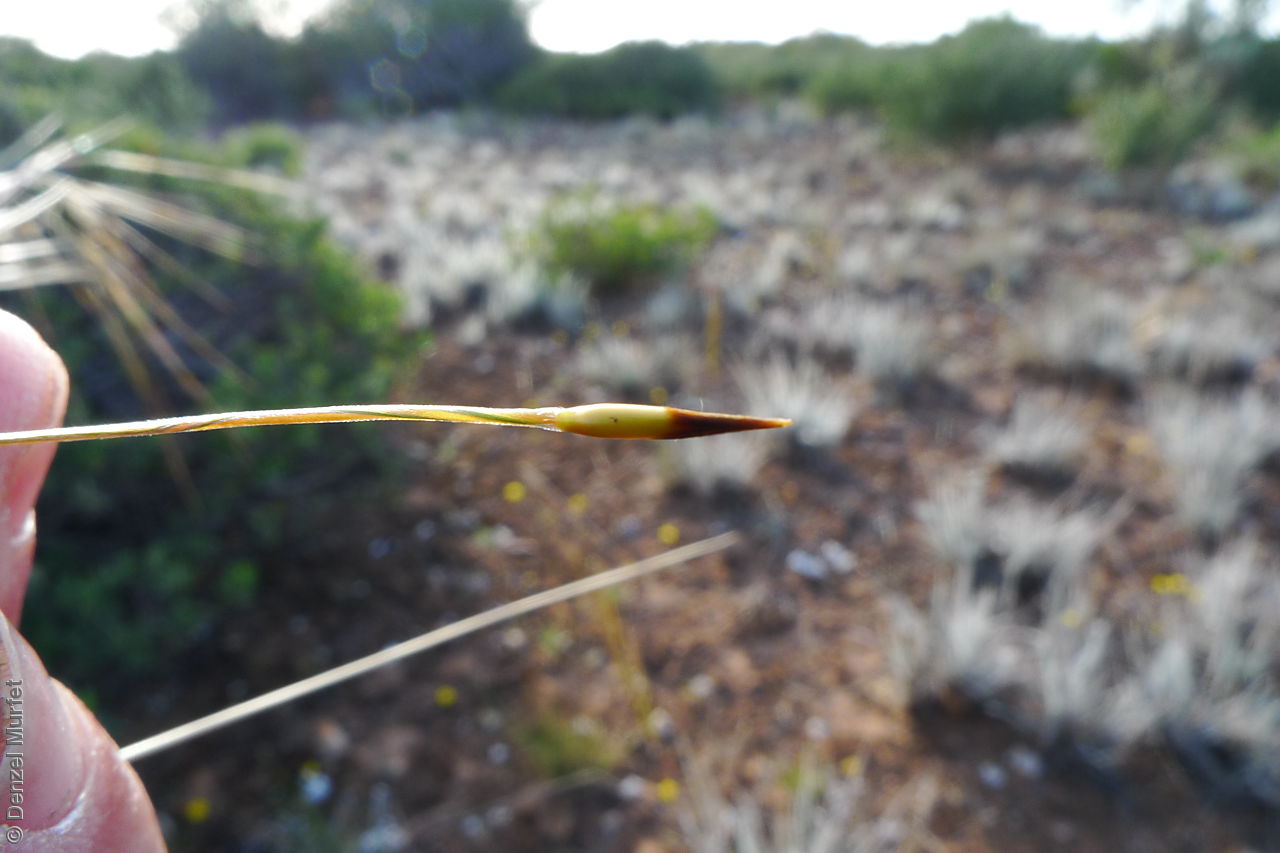
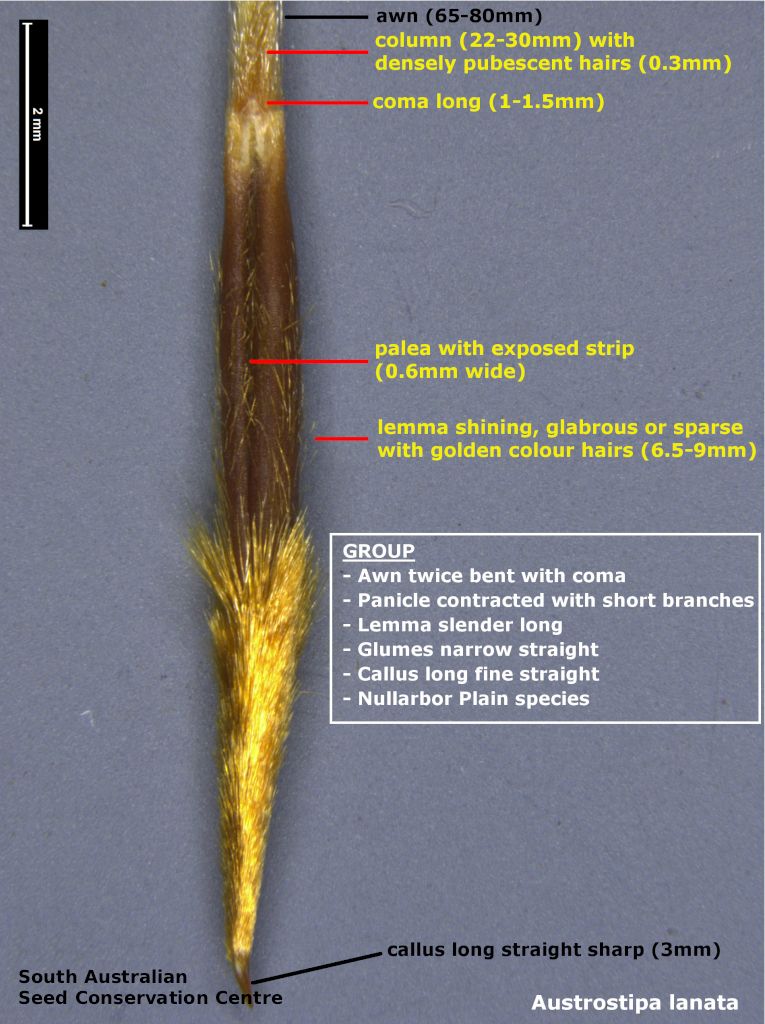

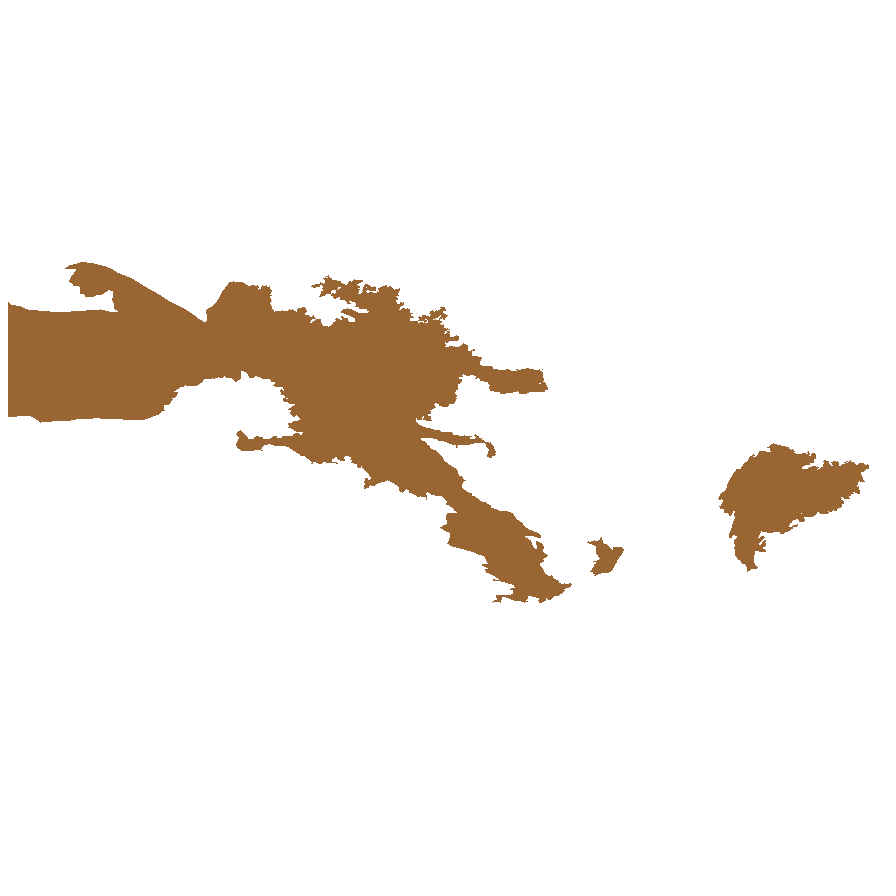
Prior names
Stipa lanata
Etymology
Austrostipa from the Latin 'auster' meaning south and the genus Stipa, referring to the genus being allied to Stipa but restricted to Australia. Lanata from the Latin 'lana' meaning wool and the suffix '-ata' meaning possessing, referring to its lowermost leaf-sheaths being woolly with tangled hairs.
Distribution and status
Found scattered from the Murrayland west to the Nullarbor in South Australia, growing on gently undulating calcareous plain. Also found in Western Australia. Native. Rare in South Australia. Rare in Western Australia.
Herbarium regions: Nullarbor, Eyre Peninsula
NRM regions: Alinytjara Wilurara, Eyre Peninsula
AVH map: SA distribution map (external link)
Plant description
Tufted perennial grass to 0.5 m high with erect unbranched culms and glabrous to silky-hairy nodes. Leaves glabrous to woolly-hairy, densely pubescent above with blades flat or loosely rolled, to 20 cm long and 4 mm wide; ligule short to 1.5 mm long. Inflorescence a contracted, not dense panicle to 15 cm long with lower glume to 26 mm long. Flowering in October.
Key to this species: awn twice bent with coma; panicle contracted with short open branches; glumes narrow straight; callus long fine straight; lower glume 19-26 mm; ligule short 0.4-1.5; column 22-30 mm with densely pubescent hairs 0.3 mm; palea with exposed strip 0.6 mm wide;, lemma shining glabrous or with sparse golden coloured hairs 6.5-9 mm; coma long 1-1.5 mm; Nullarbor Plain species Fruits are dark-brown linear-elliptic lemma to 9 mm, with the margin involute and often not meeting, creating an exposed strip at the back of the palea to 0.6 mm wide; smooth surface and glabrous or covered with sparse golden hairs; coma long to 1.5 mm; callus long straight sharp to 3 mm; awn twice bent to 80 mm long, with column denseley pubescent with hairs 0.3 mm; palea with an exposed strip to 0.6 mm wide. Seeds are yellow-brown narrow-ellipsoid grain to 5 mm long within the lemma. Seed embryo type is lateral.
Seed collection and propagation
Collect seeds between November and December. Use your hands to gently strip the seeds (lemma) off the mature fruiting spike, those that are turning brown. Mature seeds will come off easily compare to the immature seeds that remain on the spike. Alternatively, you can break off the whole fruit spike to allow some of the seeds to mature further. Place the seeds/spike in a tray and leave to dry for two weeks. No further cleaning is required if only seed collected. If seed spikes collected, use hand to strip off the mature seeds. Store the seeds with a desiccant such as dried silica beads or dry rice, in an air tight container in a cool and dry place. Viability of grass seeds could be very viable, depending on time of seed collections and seasonal conditions.